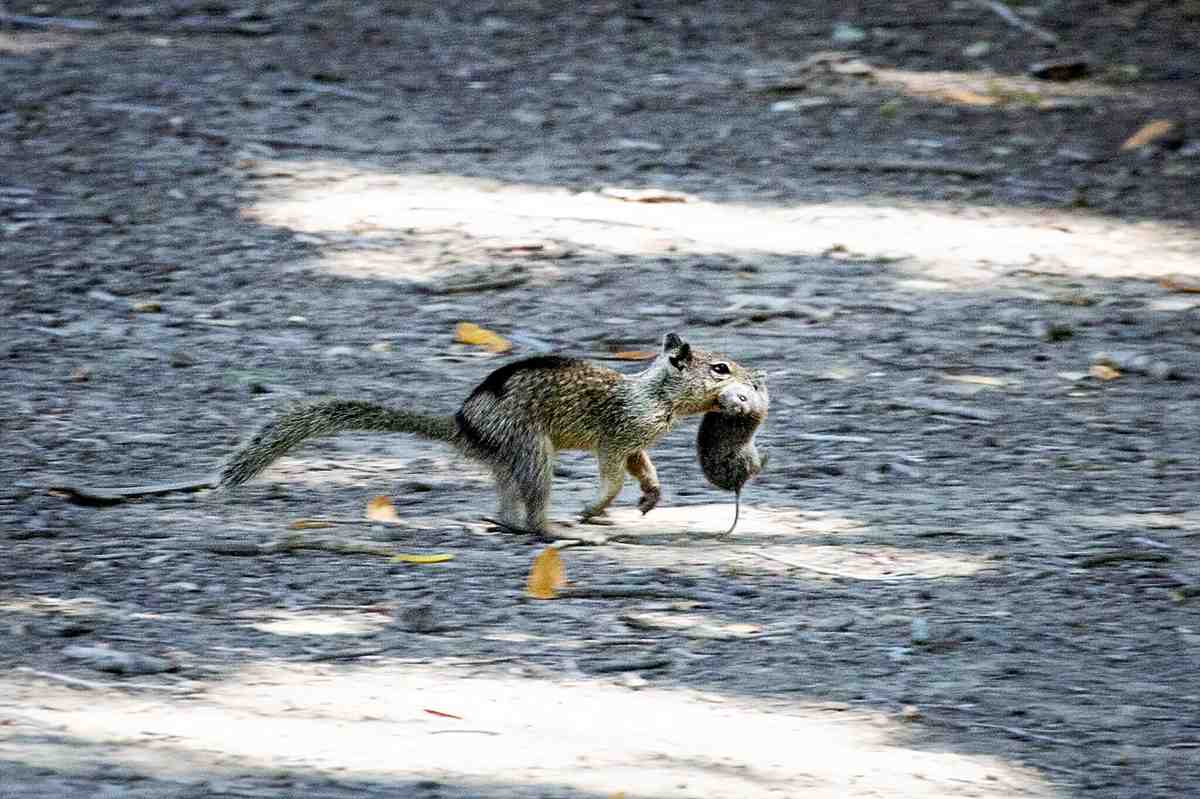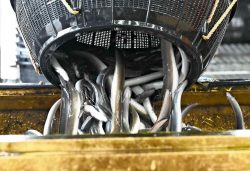
A ground squirrel is seen eating a vole in Davis, Calif., in this photo obtained on Dec. 18.
13:06 JST, January 4, 2025
WASHINGTON (AFP-Jiji) — Squirrels might look like adorable, nut-hoarding furballs, but some are ruthless predators that hunt, tear apart and devour voles.
That’s the startling finding of a new study published on Dec. 18 in the Journal of Ethology — the first to document widespread carnivorous behavior in these seemingly innocent creatures.
“There is always something new to learn and wild animals continue to surprise us,” lead author Jennifer E. Smith, an associate professor of biology at the University of Wisconsin-Eau Claire told AFP.
“In a changing world with many technological advances, there is no replacement for direct observation of natural history, including watching the squirrels and birds that often visit our backyards.”
The observations were made this summer, during the 12th year of a long-term study conducted at Briones Regional Park in Contra Costa County, Calif.
Between June and July, researchers recorded 74 interactions involving California ground squirrels and voles, with 42% of them involving active hunting of their fellow rodents.
Coauthor Sonja Wild, a postdoctoral researcher at the University of California, Davis, admitted she was initially skeptical of the reports brought to her by undergraduate students who first witnessed the behavior.
“I could barely believe my eyes,” said Wild. But “once we started looking, we saw it everywhere.”
It was previously known that as many as 30 species of squirrels opportunistically consume meat, ranging from small fish to birds. However, it was unclear whether this behavior stemmed from scavenging or active predation.
The new study is the first to confirm that hunting is, in fact, a common behavior.
Researchers observed squirrels crouching low to the ground before ambushing their prey, though more often, they chased voles, pounced, and delivered a neck bite followed by vigorous shaking.
The study also found that the squirrels’ carnivorous behavior peaked during the first two weeks of July, coinciding with a surge in vole populations reported by citizen scientists on the iNaturalist app.
Other animals, such as raccoons, coyotes and spotted hyenas, have been known to adapt their hunting strategies in response to human-induced changes in their environments.
“In a changing world, it can be daunting to consider all of the challenges that human presence, habitat loss and climate change impose on animals,” said Smith.
“Our study offers an exciting silver lining, demonstrating the incredible flexibility that some animals possess.”
Several questions still remain unanswered.
Researchers hope to investigate how widespread hunting behavior is among squirrel species, whether it is passed down from parents to pups and how it affects their broader ecosystems.
"Science & Nature" POPULAR ARTICLE
-

Genome Study Reveals Milestone in History of Cat Domestication
-

Big Leap in Quest to Get to Bottom of Climate Ice Mystery
-

Security Camera Footage Vulnerable to Outside Access; Investigation Finds 3,000 Pieces Exposed Online
-

Paws on Parade: Nairobi’s Dogs Dazzle at ‘Pawchella’
-

Japanese Eels Escape New Regulation in Vote at CITES Meeting, Avoiding Higher Prices for Dealers and Diners
JN ACCESS RANKING
-

Keidanren Chairman Yoshinobu Tsutsui Visits Kashiwazaki-Kariwa Nuclear Power Plant; Inspects New Emergency Safety System
-

Imports of Rare Earths from China Facing Delays, May Be Caused by Deterioration of Japan-China Relations
-

University of Tokyo Professor Discusses Japanese Economic Security in Interview Ahead of Forum
-

Japan Pulls out of Vietnam Nuclear Project, Complicating Hanoi’s Power Plans
-

Govt Aims to Expand NISA Program Lineup, Abolish Age Restriction
























